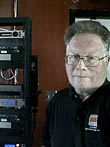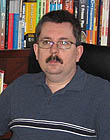|
|
This topic comprises 2 pages: 1 2
|
|
Author
|
Topic: Removing heat.
|
|
|
|
|
|
|
|
|
|
|
|
|
Guy Burns
Film Handler
Posts: 15
From: Melbourne, Victoria, Australia
Registered: Jun 2017
|
 posted 07-11-2017 02:57 AM
posted 07-11-2017 02:57 AM




I hope you don't mind a question from an outsider.
When I was shown around the projection room at the local cinema, in preparation for hiring it sometime, the operator said each of the four projectors used a 4KW bulb and the heat was exhausted to atmosphere.
A former electrical engineer, I immediately did some rough calculations: 16KW costs about $5 an hour. Say 10 hrs a day, seven days a week, that's about $20,000 of heat wasted every year. The theatres are heated most of the year, where I am. The response was: "Well, we don't worry about that."
Then you go the next step: multiplied by 10,000 theatres worldwide, that's $200 million, less some percentage for summer and hot climates.
Do any theatres use this heat to warm their cinemas?
| IP: Logged
|
|
|
|
|
|
|
|
Carsten Kurz
Film God
Posts: 4340
From: Cologne, NRW, Germany
Registered: Aug 2009
|
 posted 07-11-2017 09:40 AM
posted 07-11-2017 09:40 AM




The larger, modern multiplexes in some (energy conscious) countries actually do use the hot air from projection (and other booth gear) to recoupe energy. But not in a dedicated way directly targeted at the projector hot air, but through heat exchangers that are part of the overall building ventilation and HVAC systems.
One must say, though, that many of those modern cinema buildings have so much gear operating, so many people coming in, so many shows per day (think of a large 10+ multiplex with 5 shows per screen/day), that even in winter time, heating is not their dominant energy use, but HVAC/cooling during summer or even modest temperature days.
For smaller operations, direct use of the air exhaust heat is probably forbidden most of the time because of ozon, and fire precautions (strictly limiting direct air flow from parts of the building into the auditoriums). You could overcome the latter point with heat exchangers again, but using them only for this purpose is probably not worth the money. These would be built-to-order systems and to cover all design/engineering/security/fire precaution aspects would be very expensive.
We thought about that idea years ago when we were operating our 35mm equipment with a 2kW Xenon arc lamp. The heat it produced was impressing. However, we then looked at the specs of our gas operated auditorium air heating system, and it said '100kW'. So, how much would the heat of a xenon lamp running at 2kW max for 3hrs a day help, if we are not even allowed to feed it directly into the auditorium, but would need expensive and lossy heat exchangers?
Since we are digital, we run the same screen size from two 450W UHP lamps. The whole booth now runs probably from around 1.5-1.8kW average. We installed LED lighting everywhere in the building, and programmed our heating to the most economical scheme. That's all we can do for our 400 seat building. We did see quite an improvement in energy consumption over the last years.
- Carsten
| IP: Logged
|
|
|
|
|
|
|
|
Marcel Birgelen
Film God
Posts: 3357
From: Maastricht, Limburg, Netherlands
Registered: Feb 2012
|
 posted 07-11-2017 04:24 PM
posted 07-11-2017 04:24 PM




quote: Carsten Kurz
One must say, though, that many of those modern cinema buildings have so much gear operating, so many people coming in, so many shows per day (think of a large 10+ multiplex with 5 shows per screen/day), that even in winter time, heating is not their dominant energy use, but HVAC/cooling during summer or even modest temperature days.
You should indeed also not forget the "human factor". A human produces about 100 W of heat, so a room of about 200 people will produce about 20 kW of heat.
Also, a 2 kW lightbulb will not produce 2 kW of heat via the exhaust. Obviously, some of the energy pumped in gets "lost" as light and the lighthouse will get hot, so some heat also dissipates via radiation. If you have a full multiplex of those heat sources, you might collect them to some central point, but in order to preserve energy, your air ducts would need to be isolated. Once you've recouped the energy in a somewhat useful form, usually warm water, you still need to find a purpose for it.
Modern multiplexes in moderate and hot climates indeed don't have a heating issue very often, more likely a cooling challenge.
So, even if you extract the heat from the exhausts, the use of it is, unfortunately, pretty limited. Even if there is, for example, a municipal heating system present. The energy left after the heat exchanger usually isn't sufficient to dump into the system, because the water you've warmed with it, just isn't sufficiently warm.
In the end, all you usually can do with it, is use it for your HVAC heating, which isn't running most of the time or to pre-heat your warm water.
quote: Frank Cox
My initial idea was to leave the existing exhaust in place and set something up re-direct the projector exhaust into the auditorium during the winter, thinking that I could save a few dollars on the heat bill that way.
You might also violate local health and fire codes this way. The first one, because of the ozone which might be present in the exhaust. The second one, because a fire inside the projector could lead possible toxic smoke directly into your auditorium.
| IP: Logged
|
|
|
|
All times are Central (GMT -6:00)
|
This topic comprises 2 pages: 1 2
|
Powered by Infopop Corporation
UBB.classicTM
6.3.1.2
The Film-Tech Forums are designed for various members related to the cinema industry to express their opinions, viewpoints and testimonials on various products, services and events based upon speculation, personal knowledge and factual information through use, therefore all views represented here allow no liability upon the publishers of this web site and the owners of said views assume no liability for any ill will resulting from these postings. The posts made here are for educational as well as entertainment purposes and as such anyone viewing this portion of the website must accept these views as statements of the author of that opinion
and agrees to release the authors from any and all liability.
|

 Home
Home
 Products
Products
 Store
Store
 Forum
Forum
 Warehouse
Warehouse
 Contact Us
Contact Us




 Printer-friendly view of this topic
Printer-friendly view of this topic











![[Smile]](smile.gif) I'm about the only guy who can walk around up there without combing my hair with the stucco on the ceiling.
I'm about the only guy who can walk around up there without combing my hair with the stucco on the ceiling.



